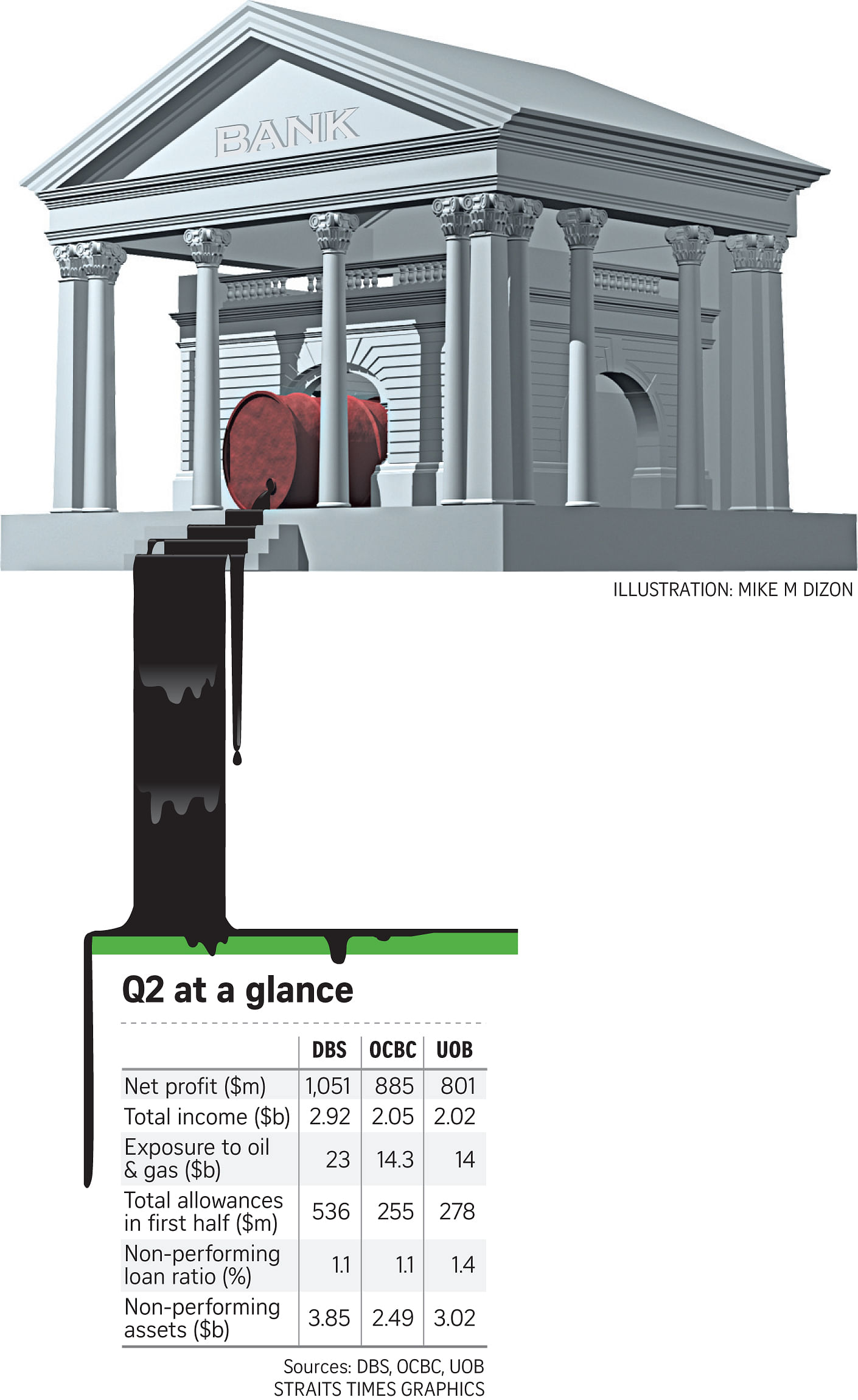The three local banks' exposure to the troubled oil and gas sector has come under renewed scrutiny in the wake of Swiber Holdings' collapse, causing anxiety in the investment community.
Many now wonder if other oil and gas firms are facing similar fates, and whether that in turn would lead to significant damage to the lenders' books. Banking analysts believe the answer is "no".
They do expect other oil and gas firms to fail to pay off loans in the months to come, which will lead to a gradual rise in non-performing loans (NPLs) at the three banks.
But analysts do not expect a crisis scenario to unfold, and they maintain a relatively sanguine outlook on the banking sector. After all, they note, while the banks' overall exposure to the oil and gas sector may look significant, the real concern is their exposure to offshore support service firms, which are facing the most trouble with their cash flows and profit margins.
This sub-sector - which includes Swiber - comprises companies that provide vessels to oil producers and conduct engineering, construction, repair and maintenance works on oil rigs and vessels.

Since the plunge in oil prices, many producers have halted the issuance of new contracts for such work. Many have also renegotiated for lower payment terms on existing contracts. So even though oil prices have recovered somewhat in recent months, support service firms are not reaping the benefit.
DBS Group yesterday said it had a $23 billion exposure to the oil and gas industry. Of this, its exposure to the category of firms which include support service providers is $7 billion. And of that $7 billion, $2 billion is to state-owned and government-linked shipyards, which are financially strong.
So DBS has an exposure of about $5 billion to small and mid-sized support service firms. Among these are five big clients, of which only one is experiencing some weakness, CEO Piyush Gupta said.
There are also 90 small clients, altogether making up $2.7 billion of the exposure, of which a third are experiencing weakness, he added.
Similarly, OCBC has an overall exposure of $14.3 billion to the oil and gas sector, but loans to support service firms total $6 billion, or 3 per cent of its whole loan book.
And United Overseas Bank's total exposure to the oil and gas sector is $14 billion, with $4 billion to support service firms - just 2 per cent of its loan book.
Standard & Poor's credit analyst Ivan Teo expects a "gradual deterioration" of oil and gas loans in the coming months, largely due to defaults among support service firms.
"On average, the banks have an NPL ratio of about 1.2 per cent, and we expect this to increase to about 1.5 per cent by the end of the year."
Even so, he noted, this is far from a crisis. "In the grand scheme of things, you must keep in mind that around the world, NPL ratios of about 2 per cent are considered healthy for banks."
Furthermore, Singapore banks are well-capitalised, he pointed out.
"NPL ratios will increase, loans growth will be flat and profits will not be spectacular but overall fundamentals are still sound."
Fitch Ratings analyst Ng Wee Siang agreed, saying there would have to be "massive levels of default" for the banks to feel a big impact on their earnings or balance sheets. He added: "Even if a few more small to mid-sized oil and gas firms go belly up, it wouldn't hurt the banks' balance sheets due to their large earnings and provisioning buffers. They have an average 113 per cent cover for their non-performing loans plus further cushions from their healthy earnings."
Correction note: The quote by analyst Ng Wee Siang was edited for clarity. We are sorry for the error.


